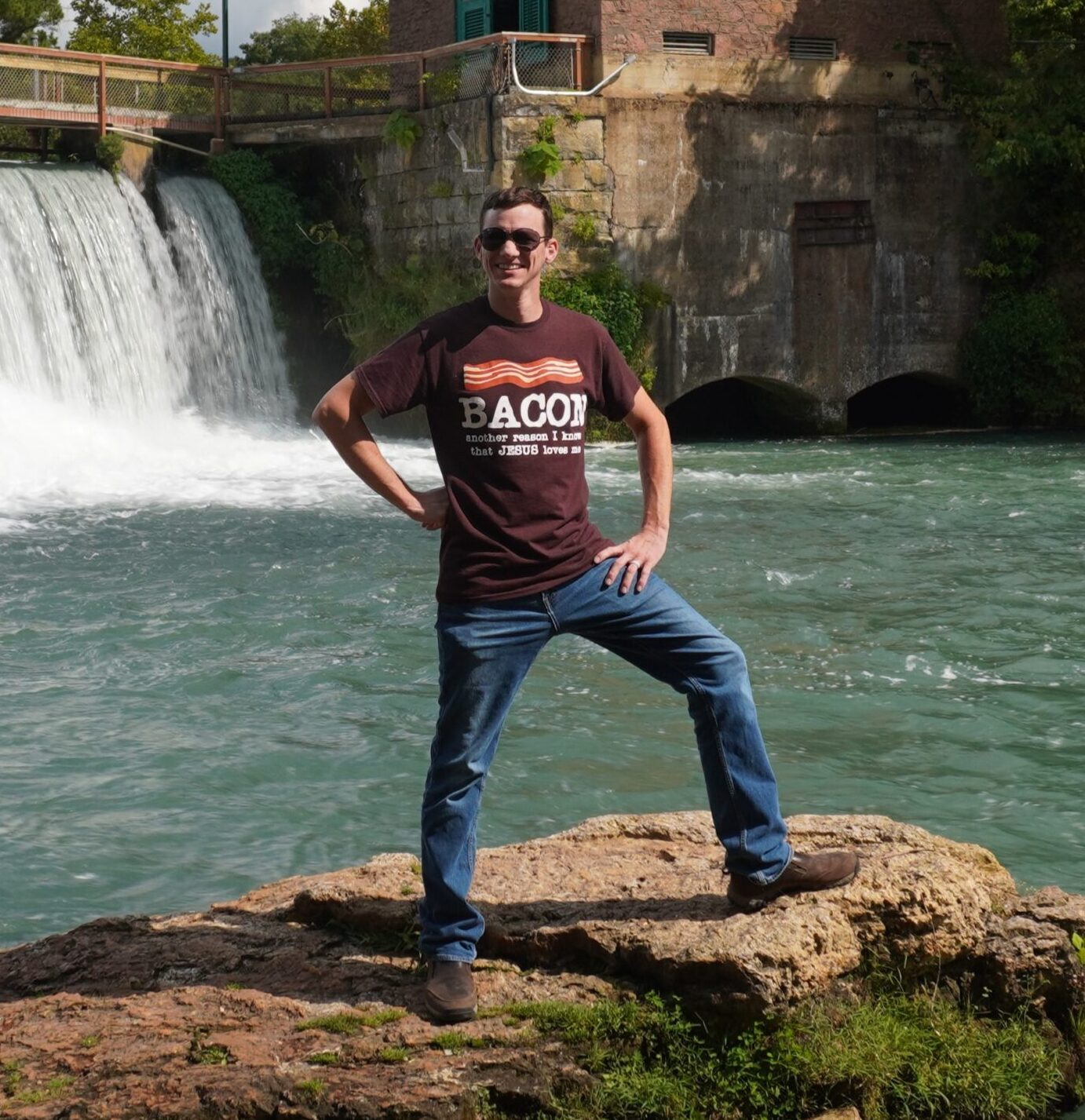Intensive grazing is not necessarily about trying to get the cattle to intensively graze an area. It’s actually management intensive grazing, so the management is the intensive part. Like a lot of people, I also refer to it as intensive grazing. The idea is to get the livestock to eat everything in the pasture, then move them to the next area.
In moving the animals around in a management intensive style, you will get more manure in higher concentrated areas. That’s a good thing! The more cow pies we have per acre the better because that helps build the soil and build the pasture.
Our pastures particularly have a lot of weeds but there is also fescue, a few other little grasses, and a little bit of clover. There is some good stuff but there is also a lot of bad stuff as well. The more the animals eat it, all of it, it will improve the pastures. The reduced weed pressure because of grazing will allow the grasses to get better established.
There are, of course, other things you can add to your pastures to improve the conditions, like lime, but we’ll save that for another post.
Better management equals greater efficiency for your pastures. Again it’s Management intensive grazing, so that’s a lot of work on your part.
Keep reading for tips on how I make this work for our farm and how implementing this system can work for your farm too.
The idea is to have electric cross fences about nose high. If the cattle touch it, will shock them and keep them on the side we want them to be grazing on. One strand is effective with the cattle. Nose height is high enough that the calves can go under it and do what is called creep grazing.
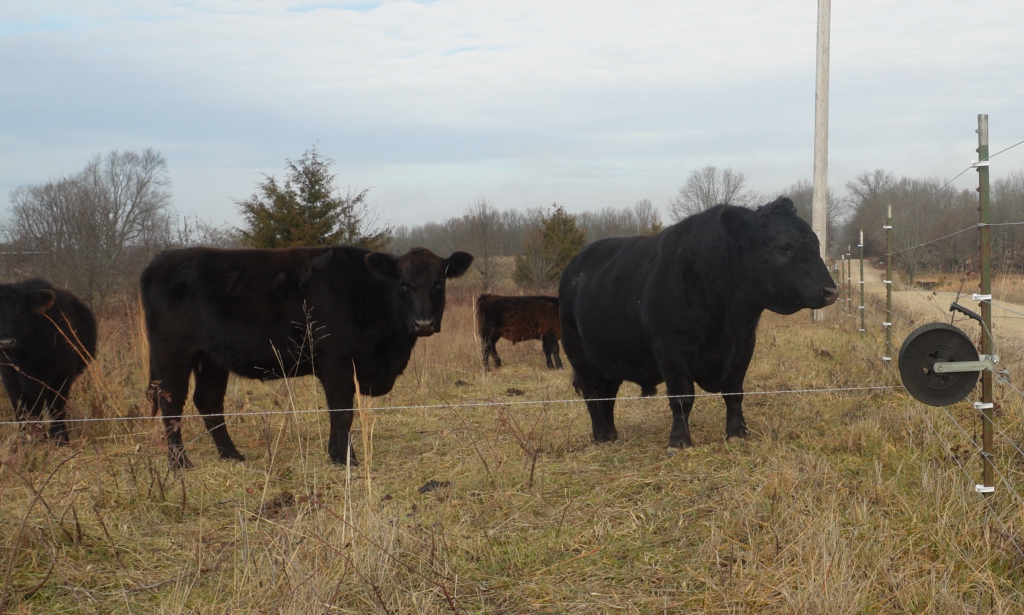
Equipment you might find helpful for Management Intensive Grazing
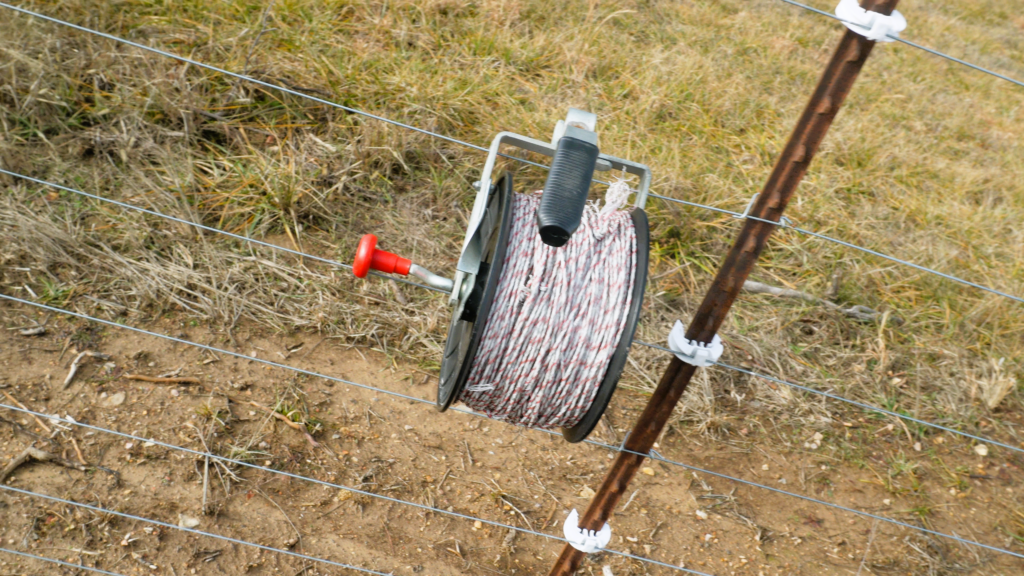
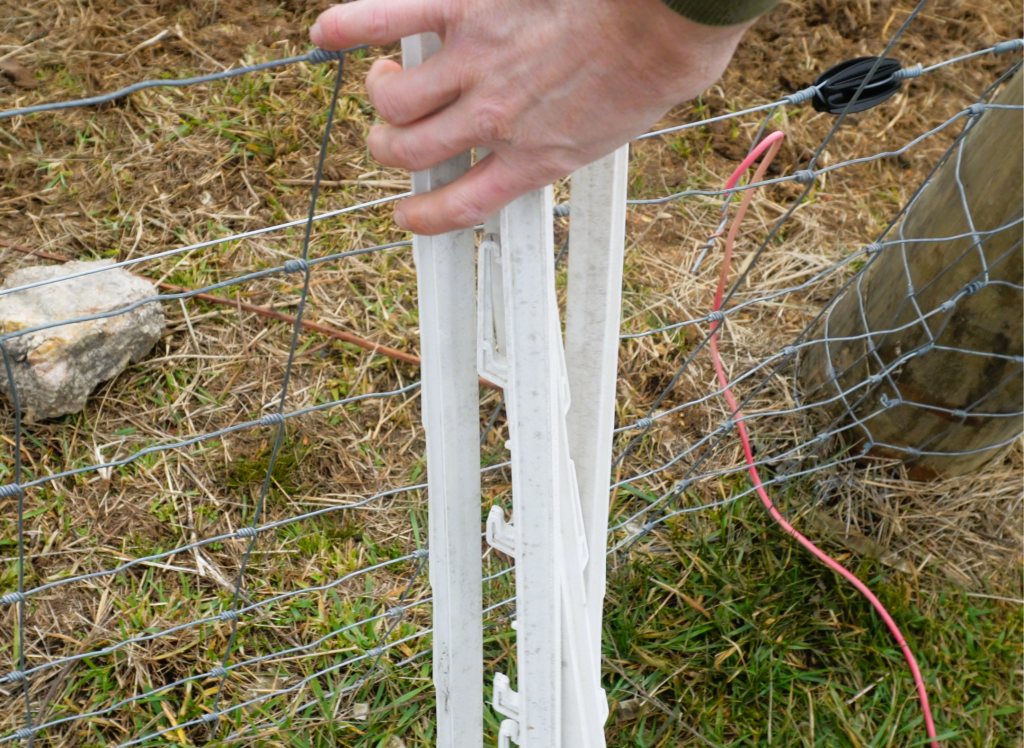
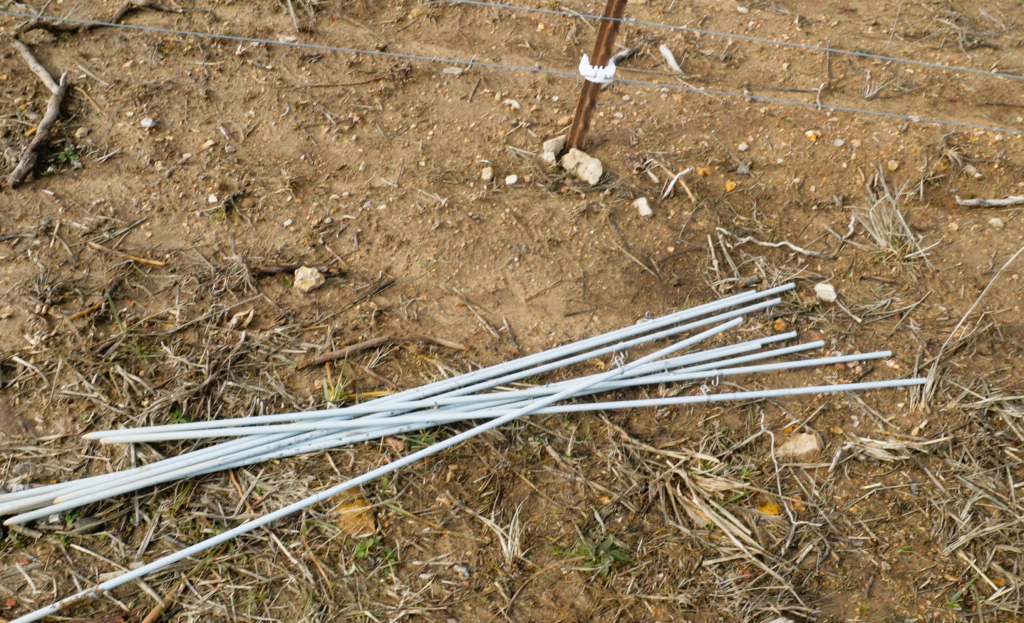
Poly Wire: I use poly wire to sub-divide the pasture into smaller areas. The poly wire allows the fence structure to be more mobile.
Posts: I use two different types of posts. The fiberglass posts with clips in them are my preferred posts, they seem to hold up better than the plastic tread-in or step-ins that I also have.
Once the tread-ins all break down I will replace them with the fiberglass posts. I also have steel posts. The steel posts are mostly rebar that are basically the same style as the fiberglass posts. I just use little twist on plastic insulators for those. I am not using any of those in my current setup, but they are available if I need them.
How do you know when it’s time to move the animals to new grazing pasture?
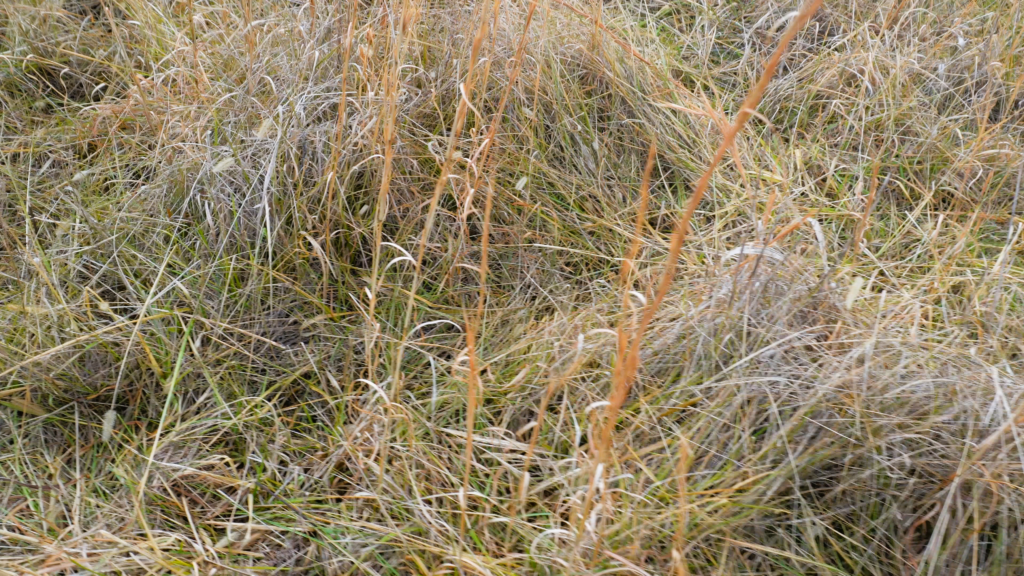
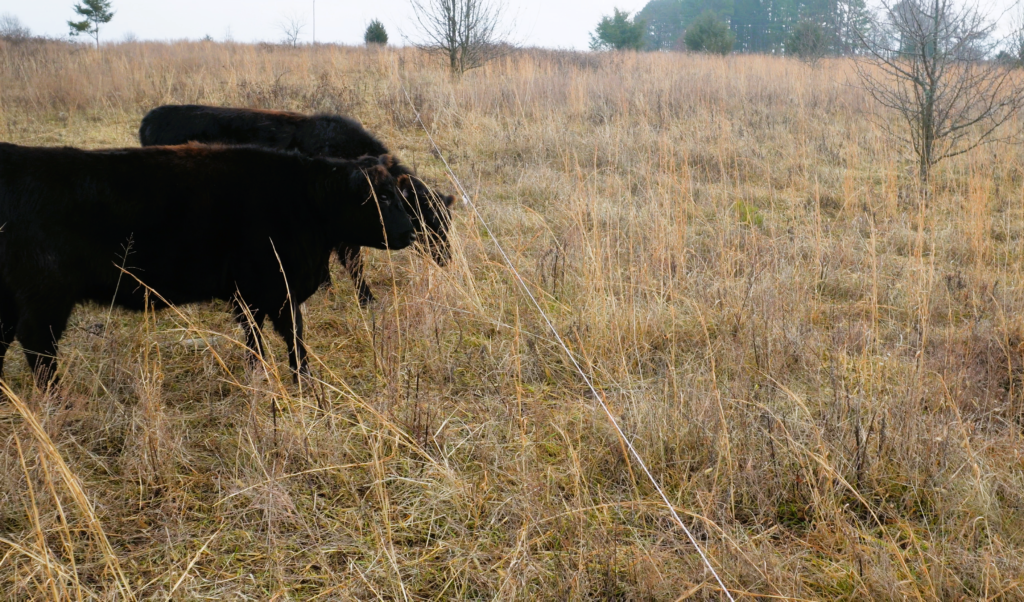
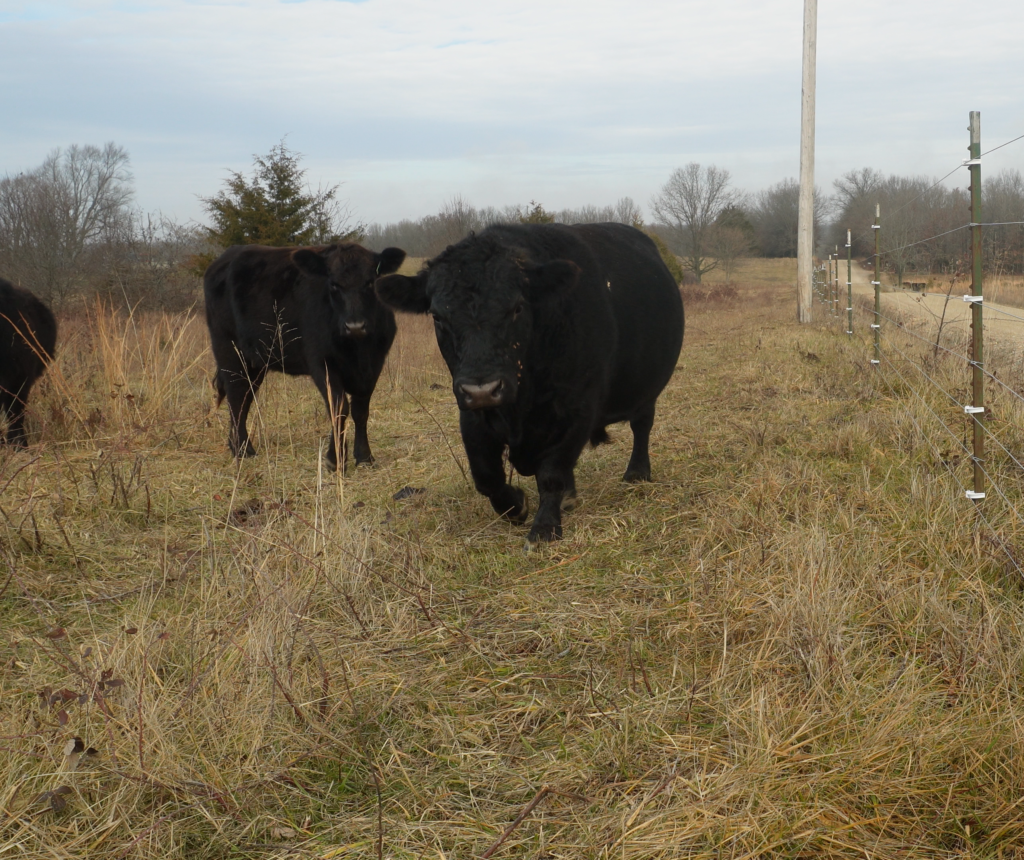
Right now, grazing stockpiled grass, I am giving my cattle strips that are about 40 to 50 feet wide by about 550 feet. That is around a half acre of grass which will last them about 4 or 5 days. Once the grass has been grazed down to about 3 inches, it’s time to move. This keeps the cattle from overgrazing the pastures, which will stunt the grass in the Spring.
At the pace we are going it should be around the first of February before we have to start feeding hay.
My process for moving the livestock in this kind of Management Intensive Grazing system
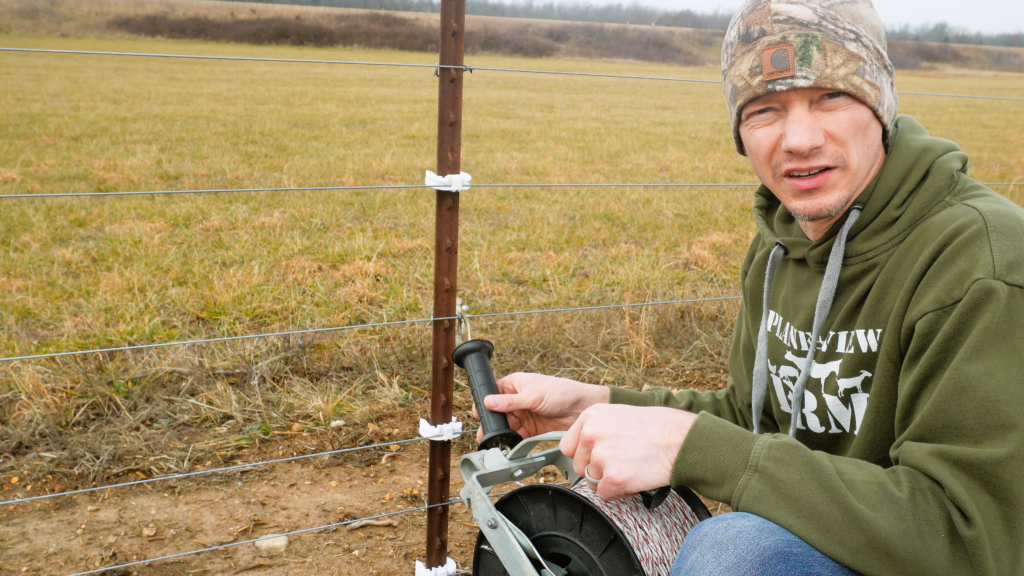
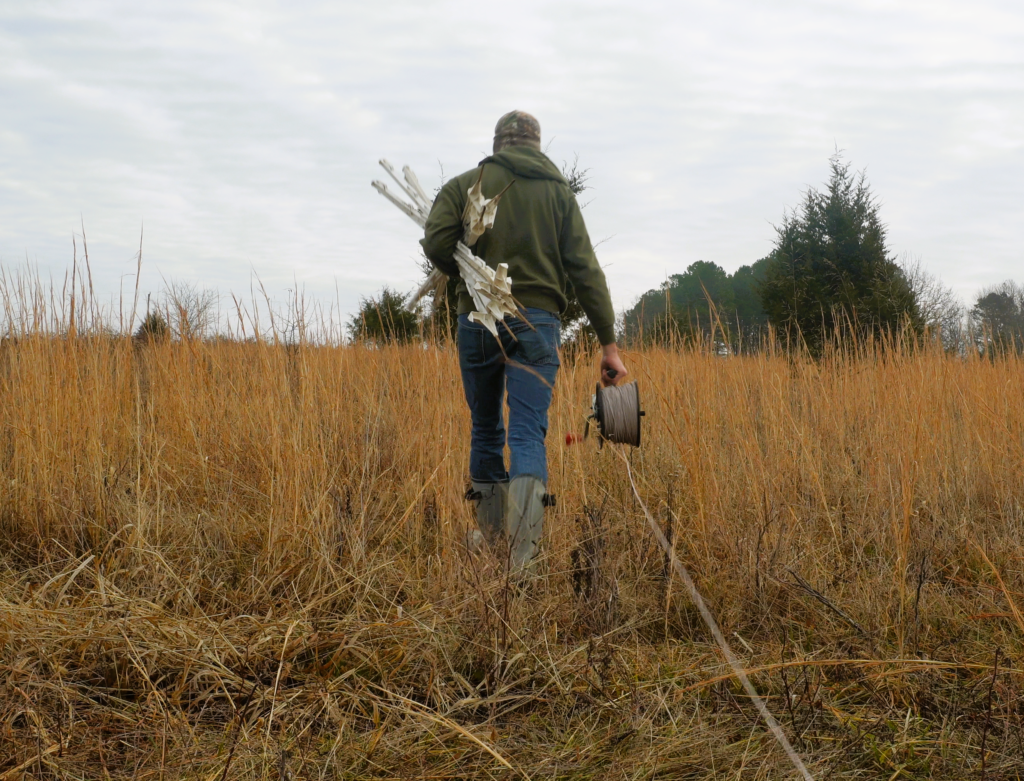
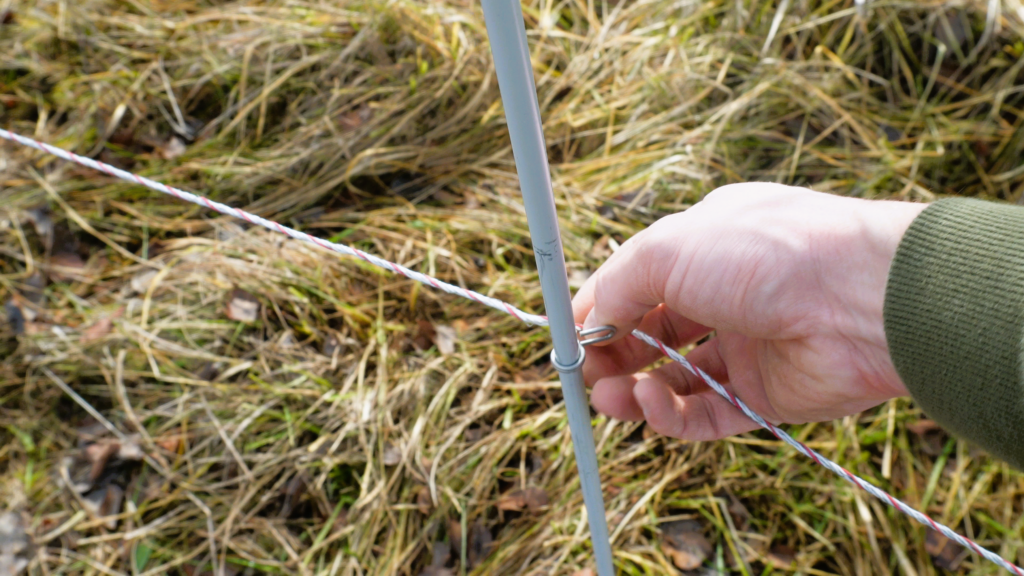
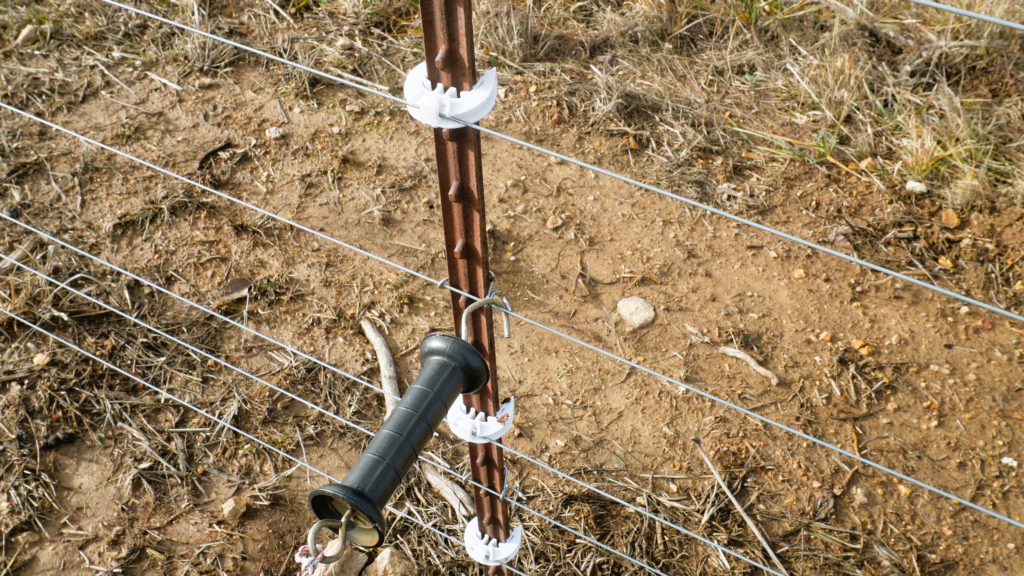
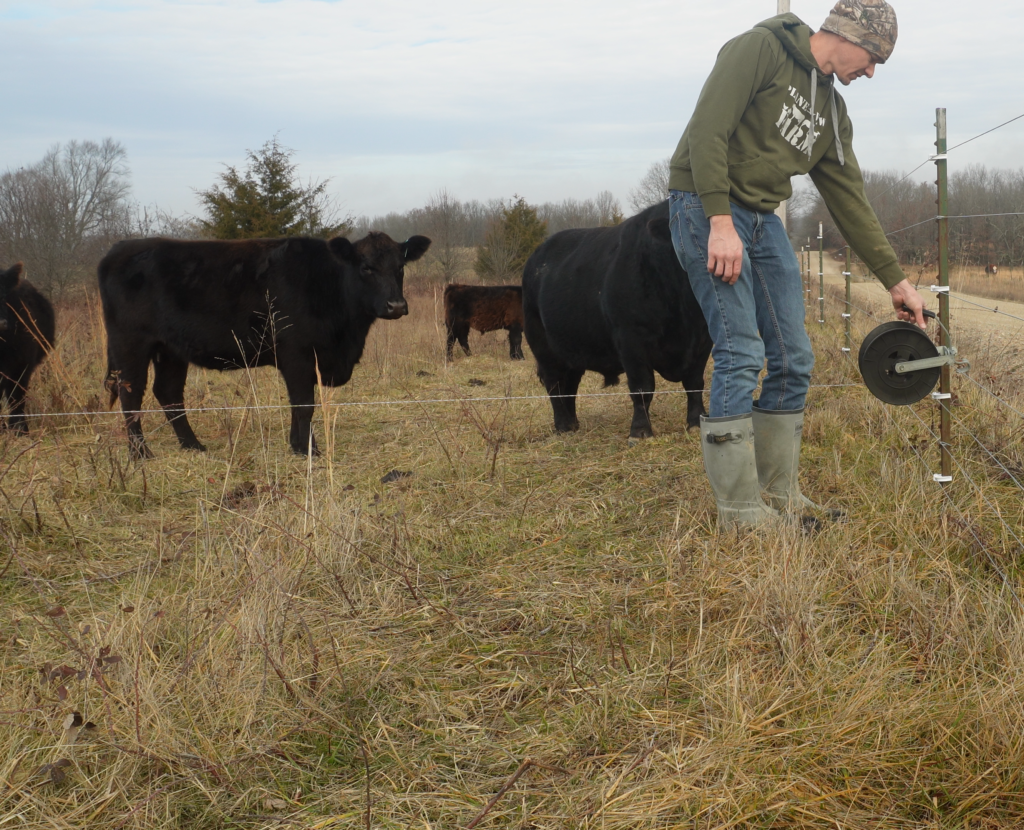
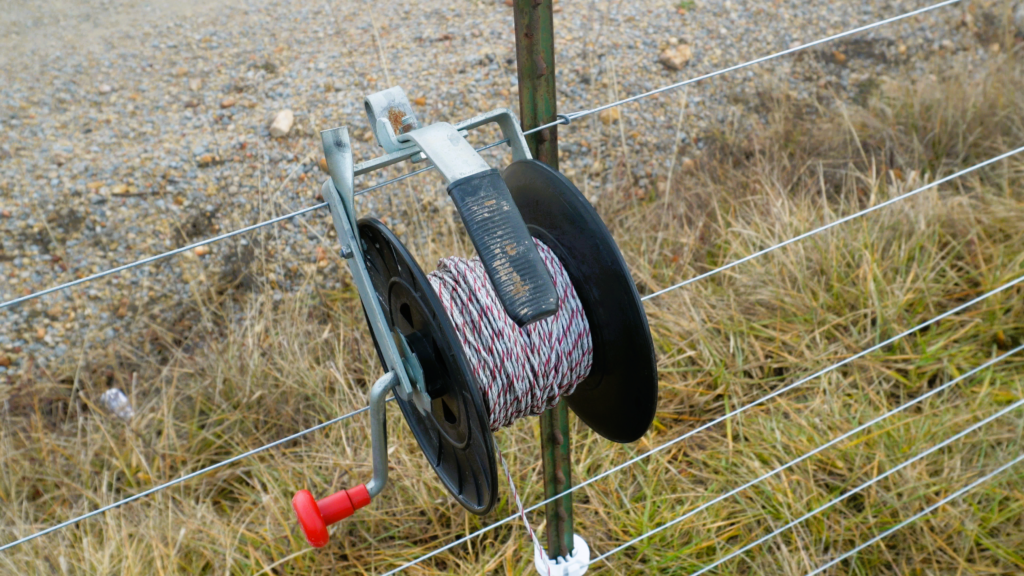
I take a handful of posts with me into the pasture. While the cows impatiently wait for this process, I do a lot of walking. Speaking of cattle, you can read what breed I have and why here.
I always keep a pile of posts by the fence to make it a little easier. That way I’m not having to walk back and forth to the house or carry way too many posts around.
Sometimes, I do this process with the fence still on. I don’t recommend this but I know what I am doing….I think. I have a gate handle attached to my poly wire that will be used to make the connection to the permanent fence. All the way across the field I have another reel of poly wire hooked onto the opposite fence.
To keep the cows on the right side of the wire until I get everything moved. I’ll just move the reel down to a wire that doesn’t have a charge to it (so I don’t get shocked…) and then I’ll pull a new wire before I unhook the old one and roll it all up.
I’ll start the new reel by hanging it on a t-post clip on a ground wire (a wire that is not hot), that way I can pull it across the field without getting shocked. I’ll hook it to a live wire when I’m finished.
Once I make it up to the other end, I’ll hook the reel onto a ground wire and pull the wire tight.
When the wire is tight, even though it is pretty low in some spots, the cows will not cross it. Then, I’ll reel up the other strand poly wire to let the cows come through. It takes them a minute to cross, but they know the drill.
The next step in the process is to put in the new post. My wire is not exactly straight because I go around obstacles, but that’s ok. I don’t place the posts any certain distance apart, just where I need one to hold the wire up.
When I have the posts all in place, I’ll make my connection at the other end of the fence by placing the gate handle on a hot wire.
Now that it’s hot, the cattle will graze the new strip of grass up to that new line. Again, the calves will be able to go under and graze the best grasses ahead of the cows (creep grazing).
With the new fence pulled and the old fence rolled back up, I hang the reel on the fence where I will pull from for the next move. I just throw my posts on the ground and everything will be ready for me in about four or five days, when I give the cows more grass.
This same method works for grazing during the growing season as well. The only difference is that you need to make sure the cattle have access to water because they must be prevented from going back over the areas they had previously grazed until the forage has time to recover. This is usually when the grass has grown to somewhere around 6-10 inches, depending on species.
That’s about all there is to it. Thanks for reading.
